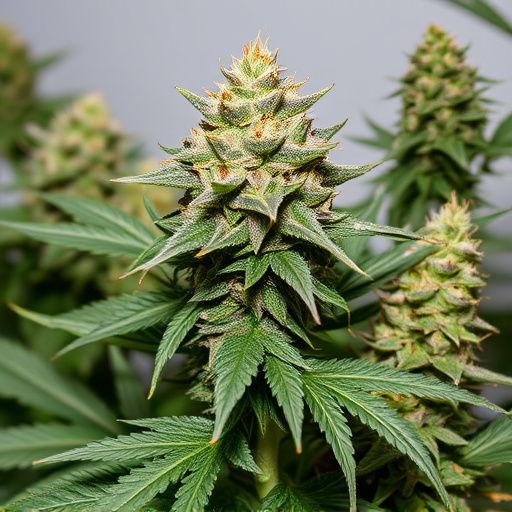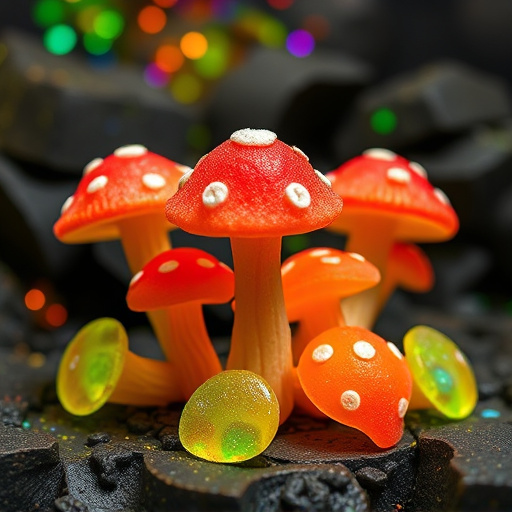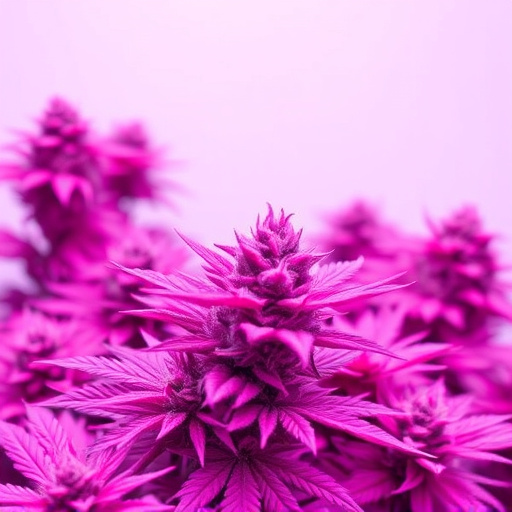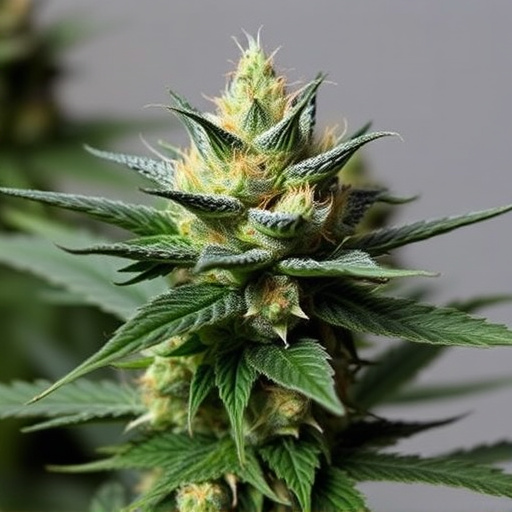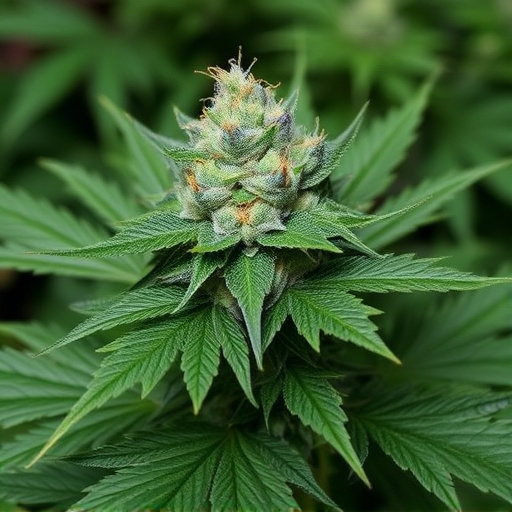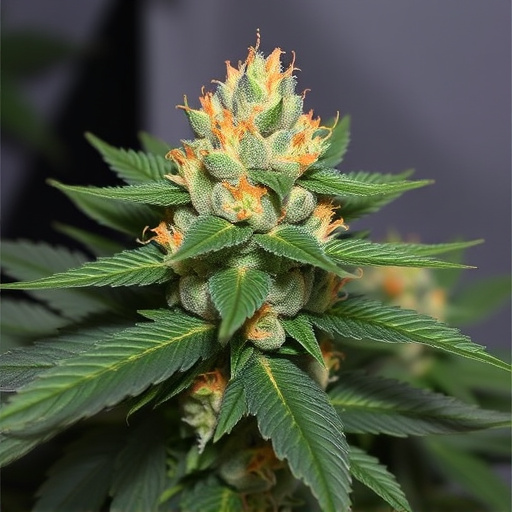THC and CBD, found in prominent kush strains, interact with the body's endocannabinoid system to manage pain. THC, known for its psychoactive properties, reduces pain signals in the brain, while non-intoxicating CBD modulates pain perception through anti-inflammatory and neurotransmitter effects. Granddaddy Purple and Blue Dream are notable kush strains with high CBD content, offering natural alternatives for chronic pain relief. The integration of these compounds into healthcare has gained popularity, with personalized dosing methods under medical supervision ensuring safety and effectiveness.
“Unraveling the science behind THC and CBD’s role in pain management offers a promising path to alleviate suffering. These natural compounds found in cannabis have shown remarkable potential in treating various forms of pain. This article guides you through the intricate process, starting with understanding how THC and CBD interact with our bodies’ endocannabinoid system. We explore specific kush strains renowned for their analgesic properties, providing a comprehensive look at their unique profiles. Additionally, we delve into safe integration strategies for effective, evidence-based pain management.”
- Understanding THC and CBD: The Role in Pain Perception
- Best Kush Strains for Targeted Pain Relief: A Look at Their Profiles
- Integration and Safety: Strategies for Effective Use of THC and CBD in Pain Management
Understanding THC and CBD: The Role in Pain Perception

THC (Tetrahydrocannabinol) and CBD (Cannabidiol) are two prominent compounds found in cannabis, often known as the best kush strains. They interact with our bodies through a complex system of receptors located in the brain and nervous system, playing a significant role in pain perception and management.
THC is well-known for its psychoactive effects, but it also acts as a potent analgesic (pain reliever). It binds to CB1 receptors in the brain, which are involved in regulating pain, mood, memory, and coordination. This interaction can reduce pain signals sent from the body to the brain, offering relief for chronic pain sufferers. On the other hand, CBD does not produce a “high” effect but interacts with the endocannabinoid system indirectly, modulating the perception of pain. It has anti-inflammatory properties and can also influence the activity of certain neurotransmitters that contribute to pain sensation. Many individuals turn to cannabis strains high in CBD for its potential therapeutic benefits without the mind-altering effects of THC.
Best Kush Strains for Targeted Pain Relief: A Look at Their Profiles
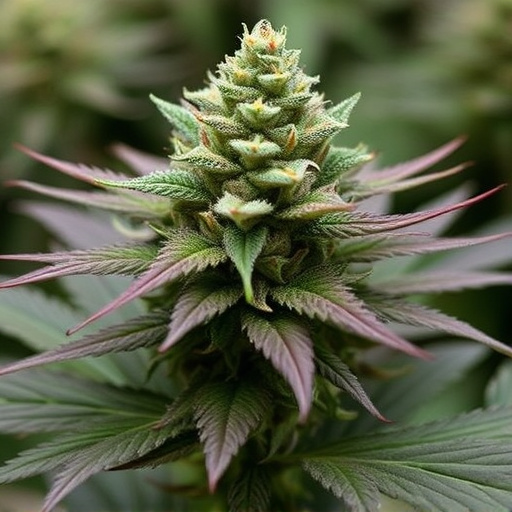
When it comes to targeting pain relief, certain Kush strains have emerged as game-changers in the cannabis community. These strains are renowned for their potent combinations of THC (tetrahydrocannabinol) and CBD (cannabidiol), offering a unique approach to managing chronic conditions. For instance, the Indica dominant strain, Granddaddy Purple, is celebrated for its high CBD content, providing users with potential anti-inflammatory benefits while inducing a calming effect that can ease muscle spasms and joint pain.
Another standout is Blue Dream, known for its balanced profile of THC and CBD. This versatile strain may help alleviate neuropathic pain due to its ability to interact with the endocannabinoid system. Its uplifting yet relaxing properties make it ideal for those seeking pain relief without an intense psychoactive effect. These best kush strains offer promising options for individuals looking for natural, alternative methods to manage pain effectively.
Integration and Safety: Strategies for Effective Use of THC and CBD in Pain Management
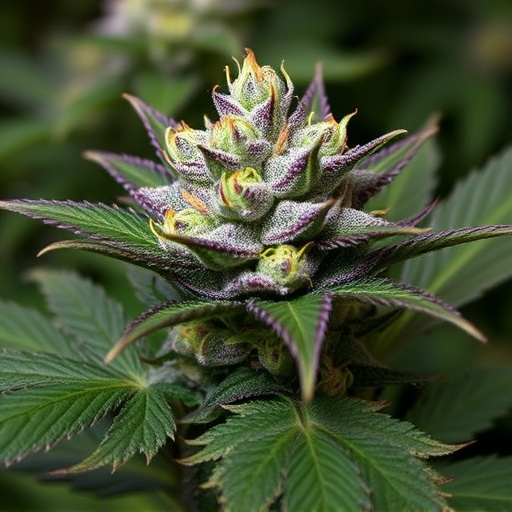
The integration of THC (Tetrahydrocannabinol) and CBD (Cannabidiol) into pain management strategies has gained significant traction in recent years, with many individuals turning to these compounds for relief. When used effectively, THC and CBD can offer a comprehensive approach to managing chronic pain, especially when tailored to specific needs. For instance, certain best kush strains known for their high CBD content are popular among patients seeking alternative treatments.
To harness the full potential of these compounds, it’s essential to consider personalized dosing and method of consumption. Some individuals may prefer inhaling through vaporizers for quicker relief, while others might opt for oral methods like edibles or tinctures for more controlled dosages. Regular communication with healthcare providers is crucial to monitor progress, adjust dosage, and ensure safety, especially as THC can have varying effects on different people.
THC and CBD, two prominent compounds found in cannabis, offer promising avenues for pain management. Understanding their roles in perceiving and mitigating pain is key to unlocking their potential. Exploring specific best kush strains known for their therapeutic properties can provide targeted relief. Safe integration strategies, including proper dosage and consultation with healthcare professionals, ensure effective use of these natural compounds. With ongoing research and increased accessibility, THC and CBD hold great promise as alternative treatments for various pain conditions.


